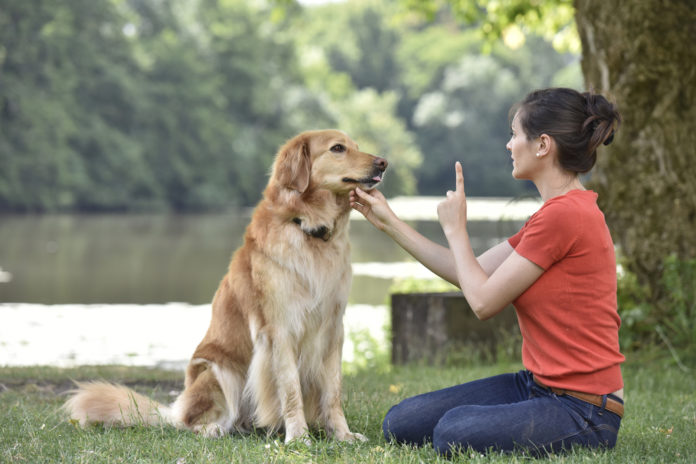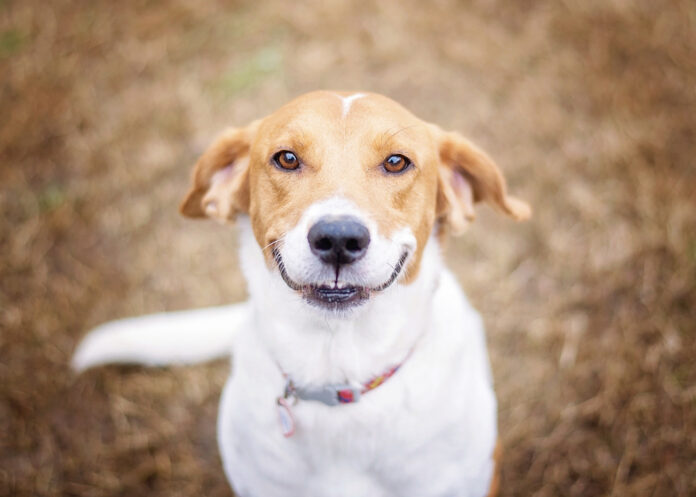Behavior proofing — a vital step when training your dog

If your dog only “comes” or “stays” in certain environments and situations, then it’s time to add behavior proofing to his training regime.
Does your dog always respond when called at home, but only sometimes at the dog park? Does she have a perfect “wait” cue in the garden, but seems to ignore the word on walks? Many people can relate to this frustration. There’s a reason why your dog doesn’t respond when you really need her to, though – and behavior proofing is the way to fix it.
Why is it necessary?
Behavior proofing involves teaching your dog a particular cue in gradually more difficult environments or situations. The goal is to be certain that your dog will always respond, regardless of noises, smells and other distractions.
This is a vital step, because dogs aren’t good at generalization. Just because your dog knows he shouldn’t rush out the front door at home, for example, doesn’t mean he’ll realize the same applies at the door to a friend’s house.
Just because your dog knows he shouldn’t rush out the front door at home doesn’t mean he’ll realize the same applies at the door to a friend’s house.
Even if your dog understands a cue in a new environment, he’s less likely to follow it when there are lots of distractions – at least without specific practice. This is why you’ll often see puzzled people at dog parks who can’t understand why their usually reliable dogs won’t come back when called.
How to proof a behavior
The first step in dog training is to teach a cue or behavior in a calm quiet environment, such as inside your house. Only when your dog responds reliably and instantly to the cue do you need to start applying the concept of proofing.
Once your dog “knows” the cue inside the house, the next step is to practice in more difficult situations. An example progression might include:
- At home with no distractions (make sure your dog really knows the cue before moving on)
- At home with noise distractions
- At home with other people or animals nearby
- In the garden
- In the garden with other people or animals nearby
- On the pavement outside your home
- In a quiet woodland without distractions
- At a dog park with lots of other dogs and people around
Each step is likely to take multiple practice sessions. You should move on only when your dog consistently responds in the current environment. Keep in mind, though, that environment isn’t the only proofing variable. The distance between you and your dog can also make a cue more difficult, so practice with gradually increased separations. Teaching the dog to hold a cue for longer (such as “stay”), or respond to a different handler, is also important.
The distance between you and your dog can also make a cue more difficult, so practice with gradually increased separations.
Other tips for proofing a behavior in your dog
- Don’t’ be tempted to add multiple distractions or variables all at once. Instead, focus on making the cue more difficult in just one way, so your dog isn’t overwhelmed.
- Make sure you’re giving your dog a reasonable chance of success. If he’s highly excitable at the dog park, don’t practice cues there until you’ve proofed multiple environments with fewer distractions.
- Try to ensure your dog is calm before training sessions. An overexcited dog with lots of built-up stress will find it much harder to learn. Providing more exercise or mental stimulation during the day, perhaps with a puzzle feeder or a longer walk, can help with this.
- It’s also important that your dog enjoys each session. Remember to use lots of tasty treats and praise, so training becomes a fun and positive experience.
Proofing a behavior is essential when training your dog. In fact, most trainers believe a dog only really “knows” a cue if he can respond immediately and reliably in all situations.
The proofing process can take time, but it’s worth the extra effort. Training is also a great way to bond with your dog and provide mental stimulation, so it’s a great activity for both of you.




